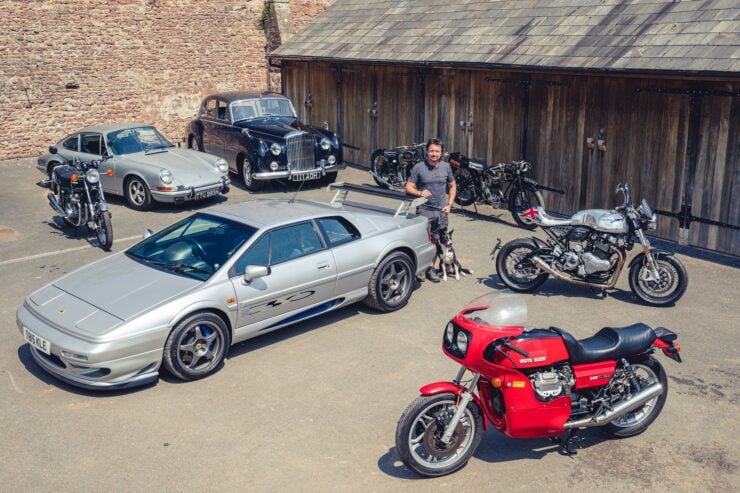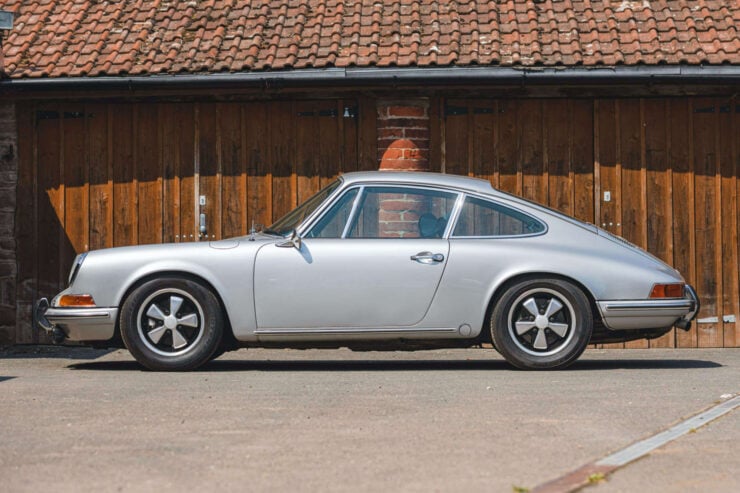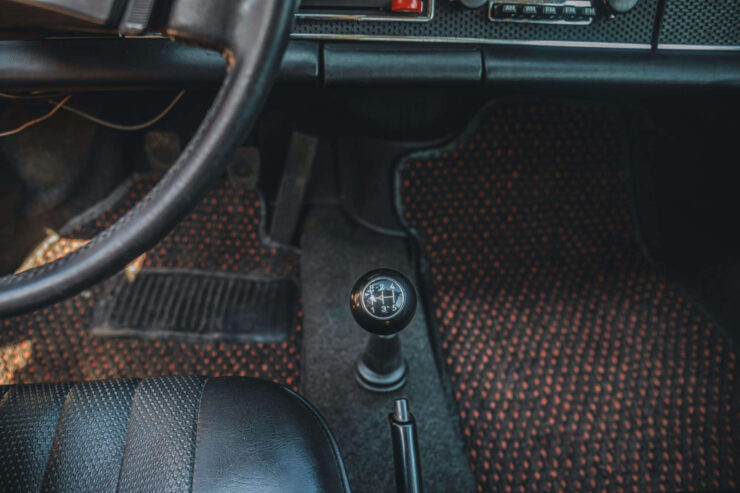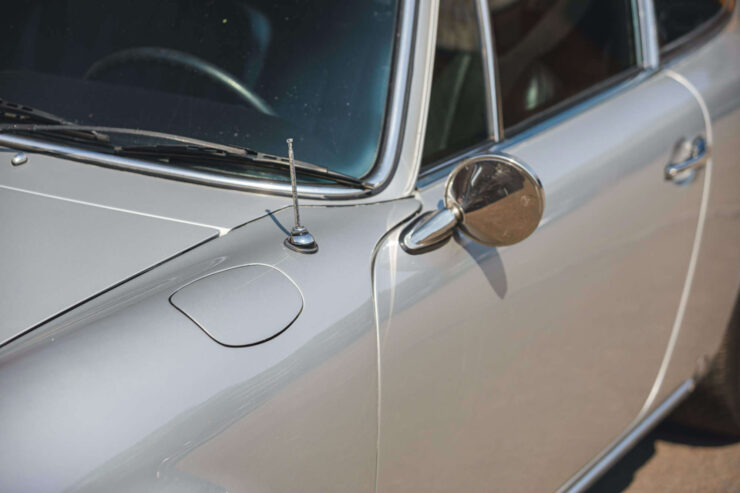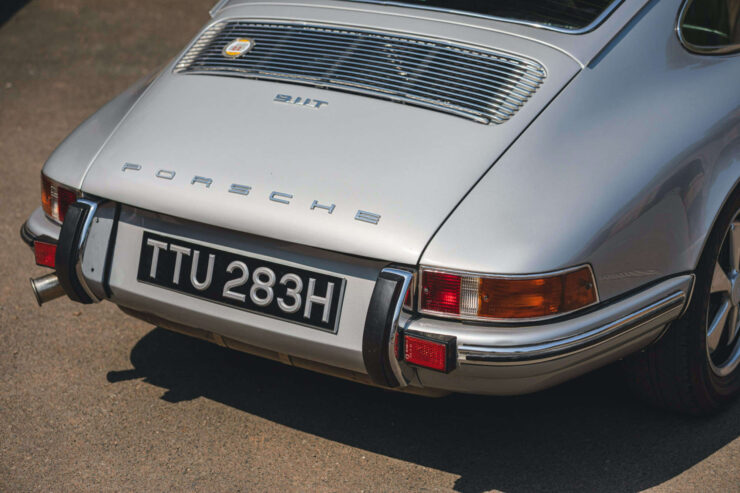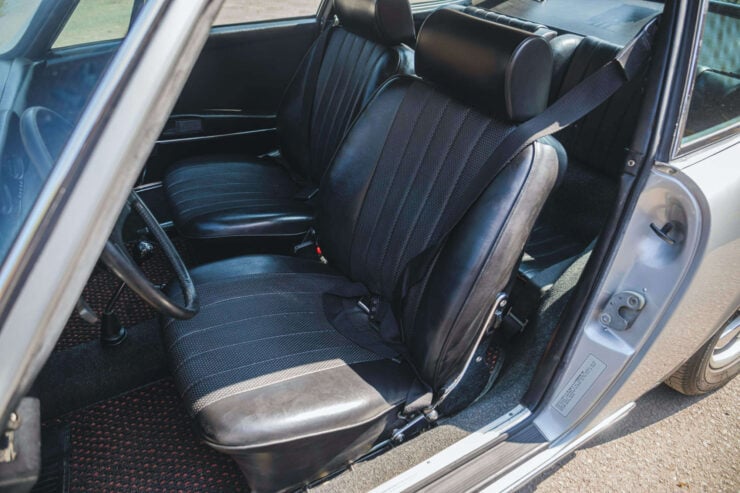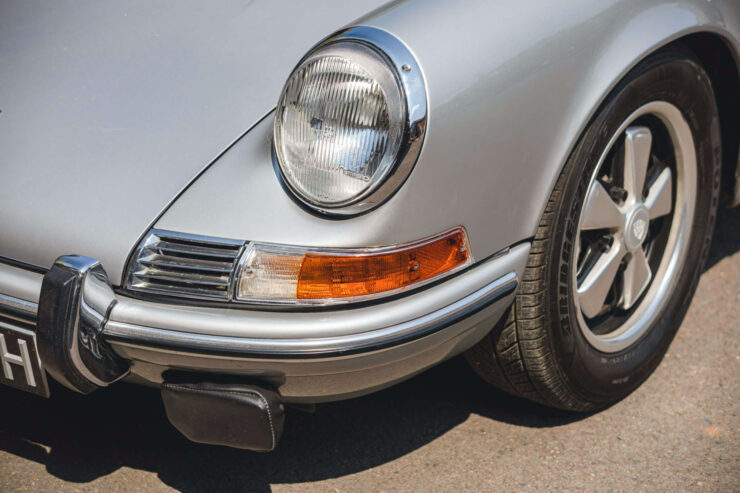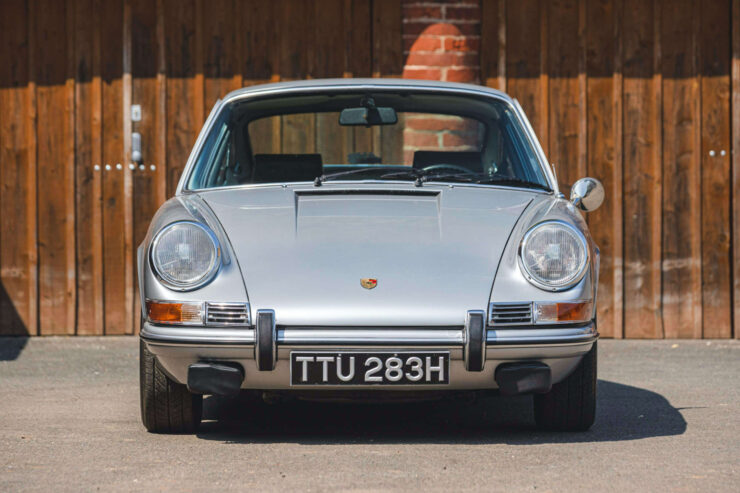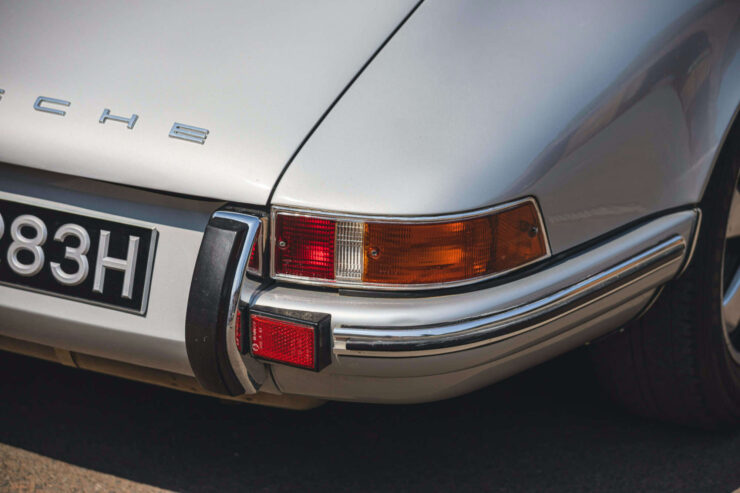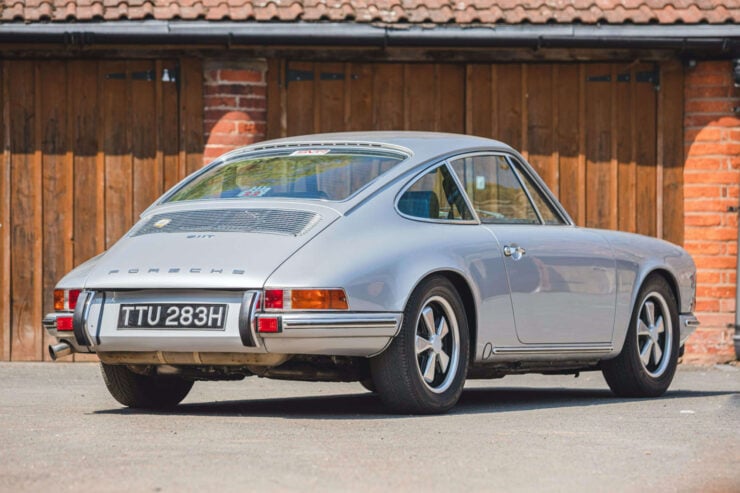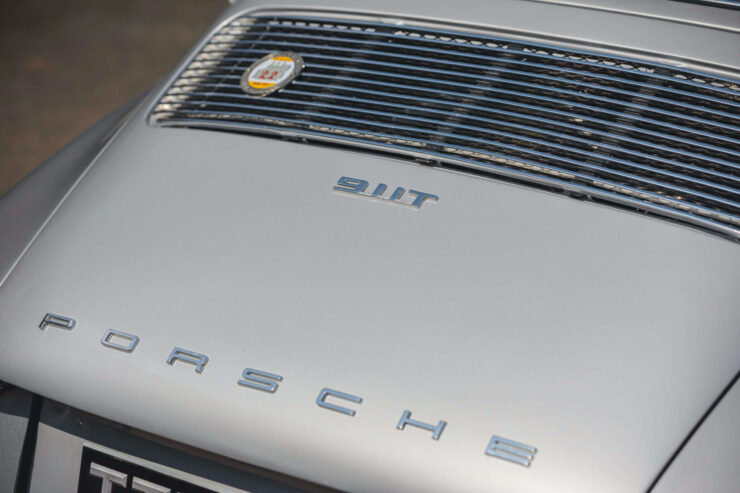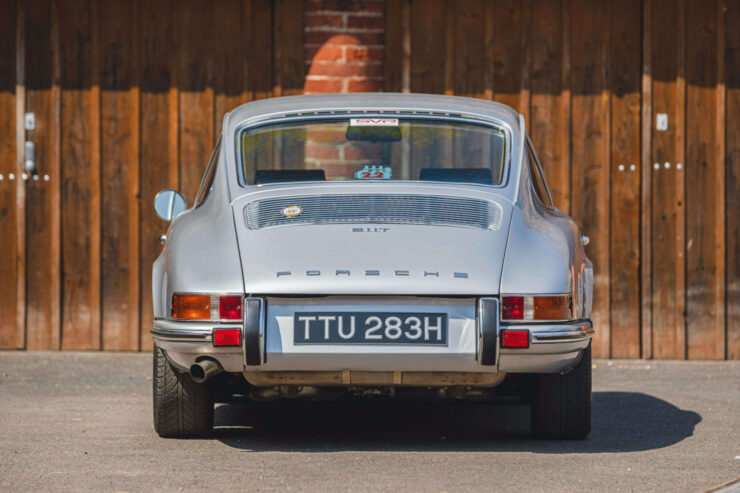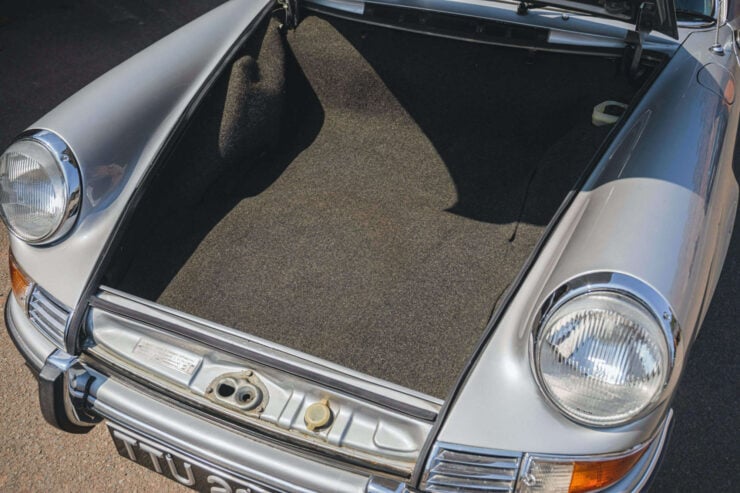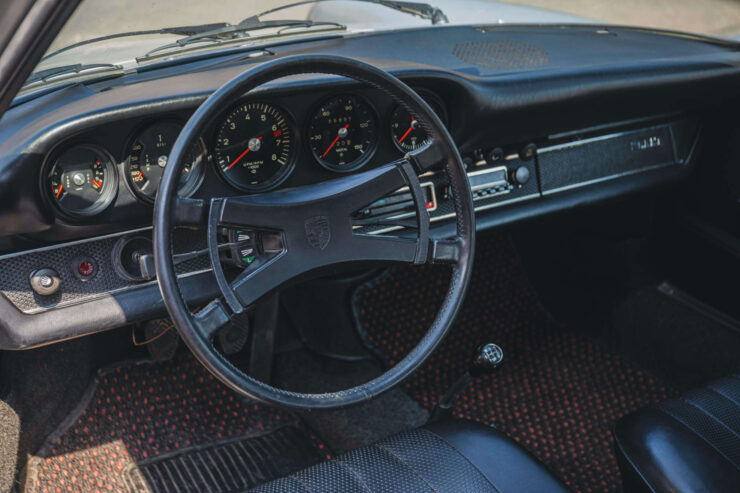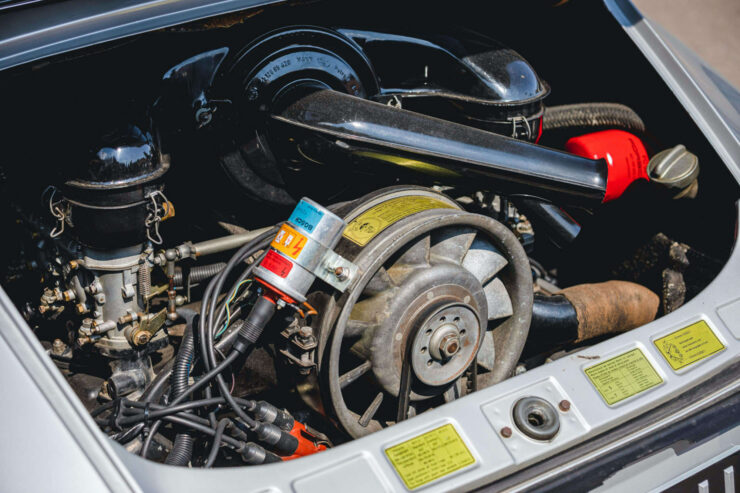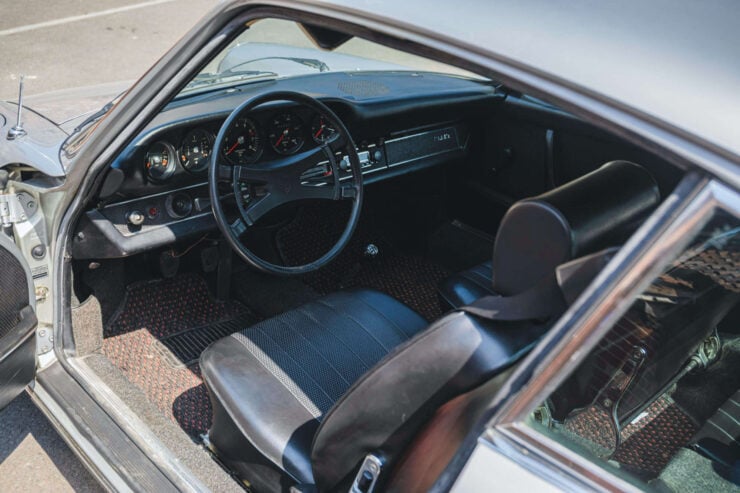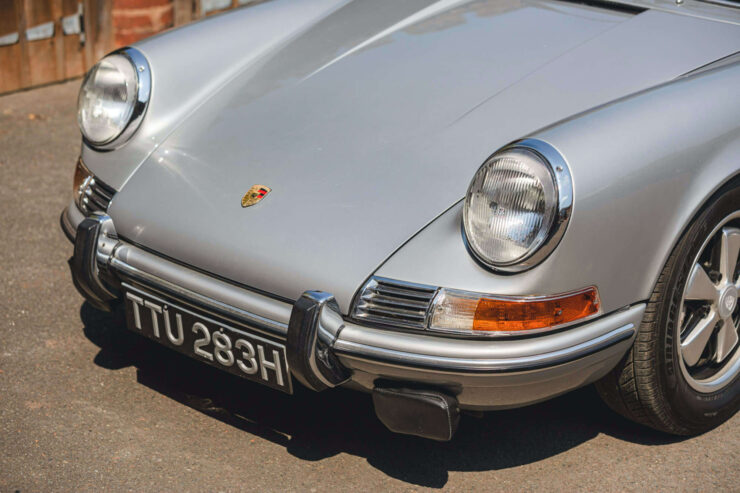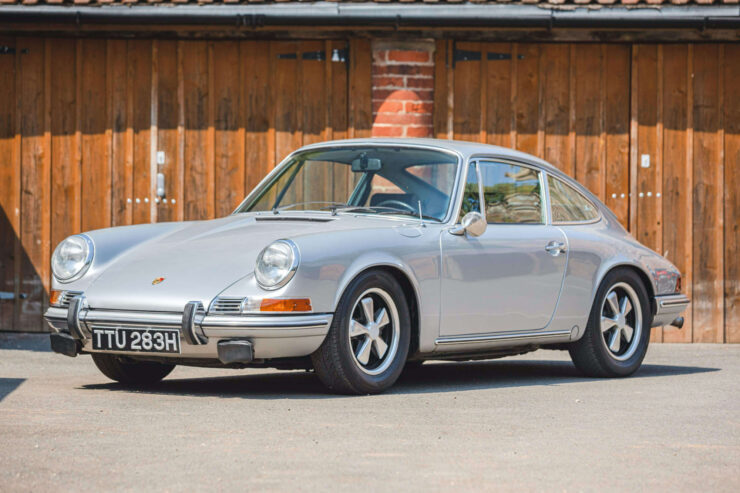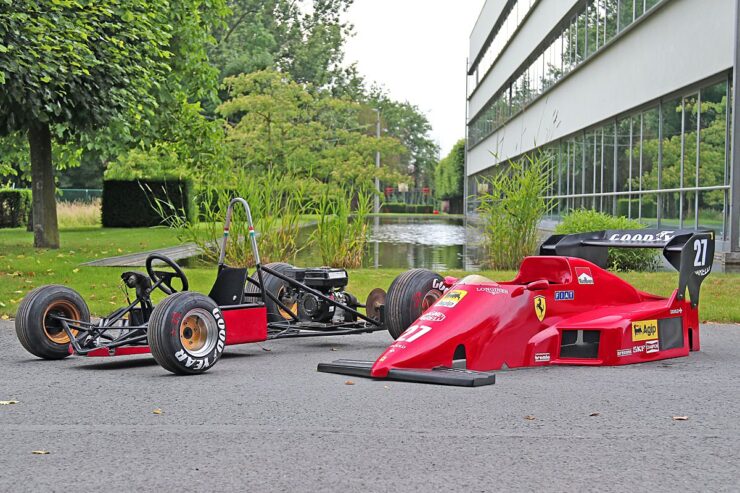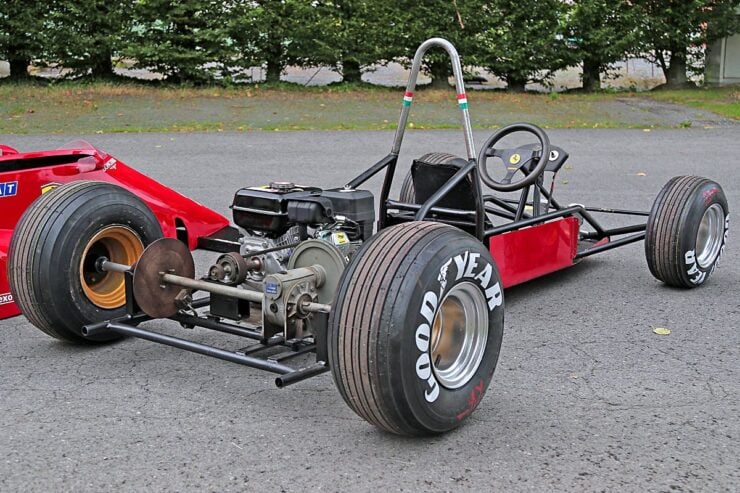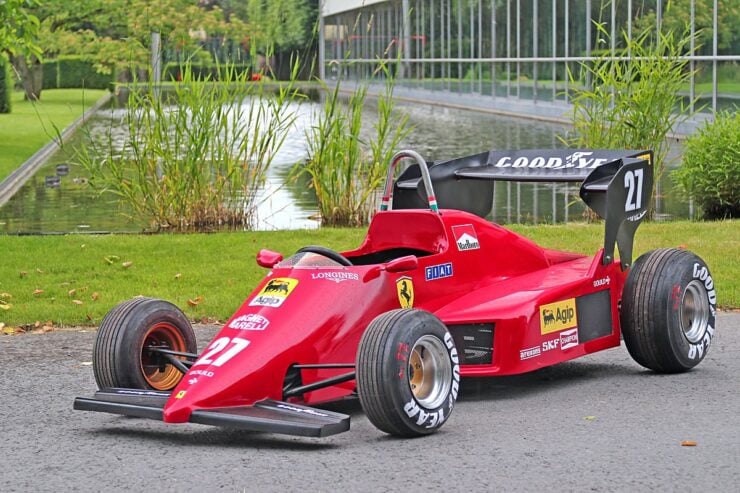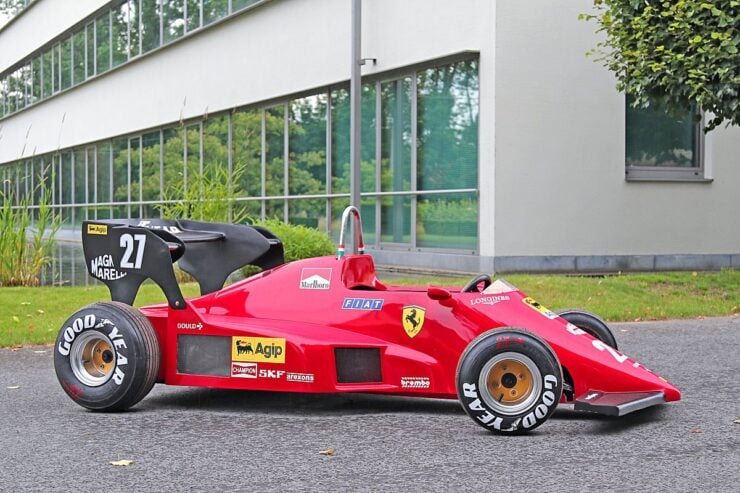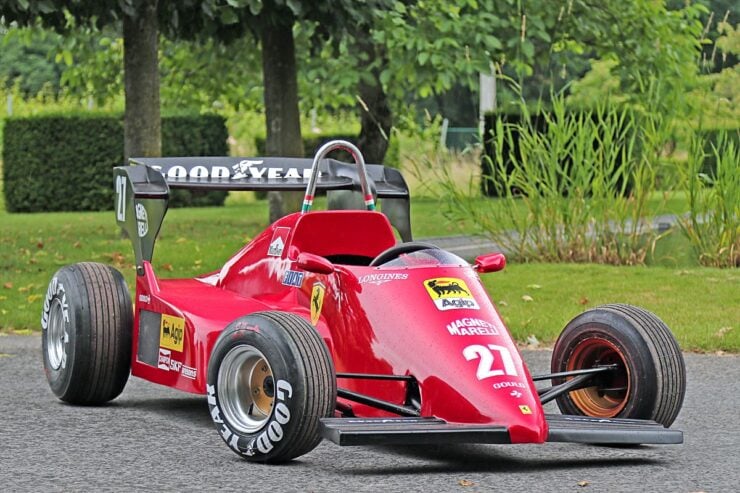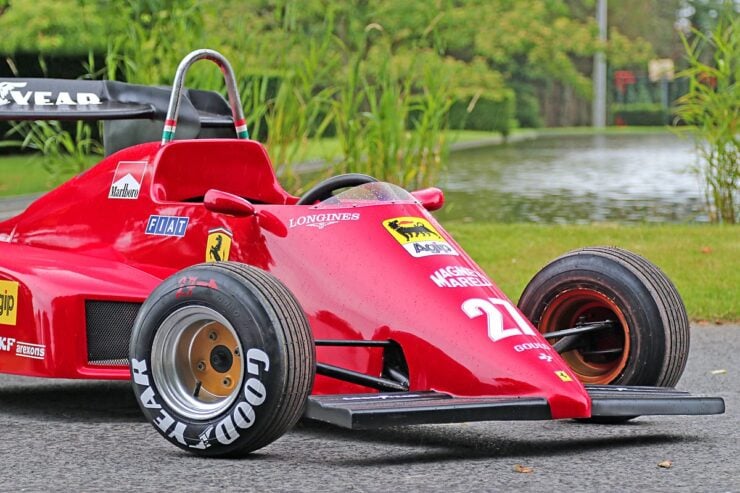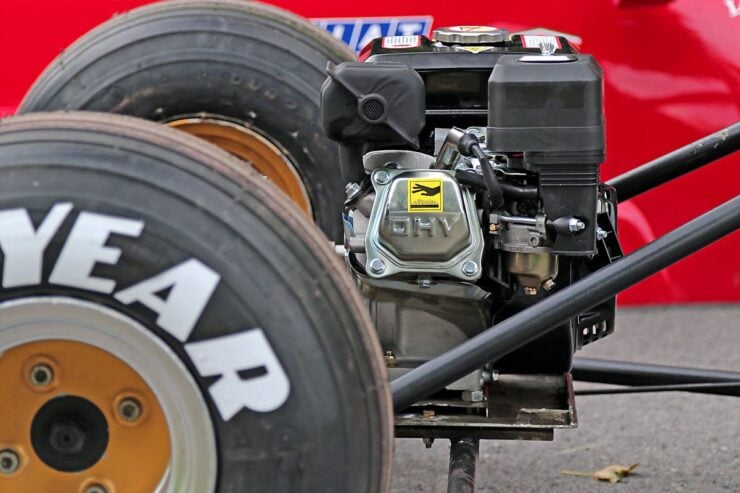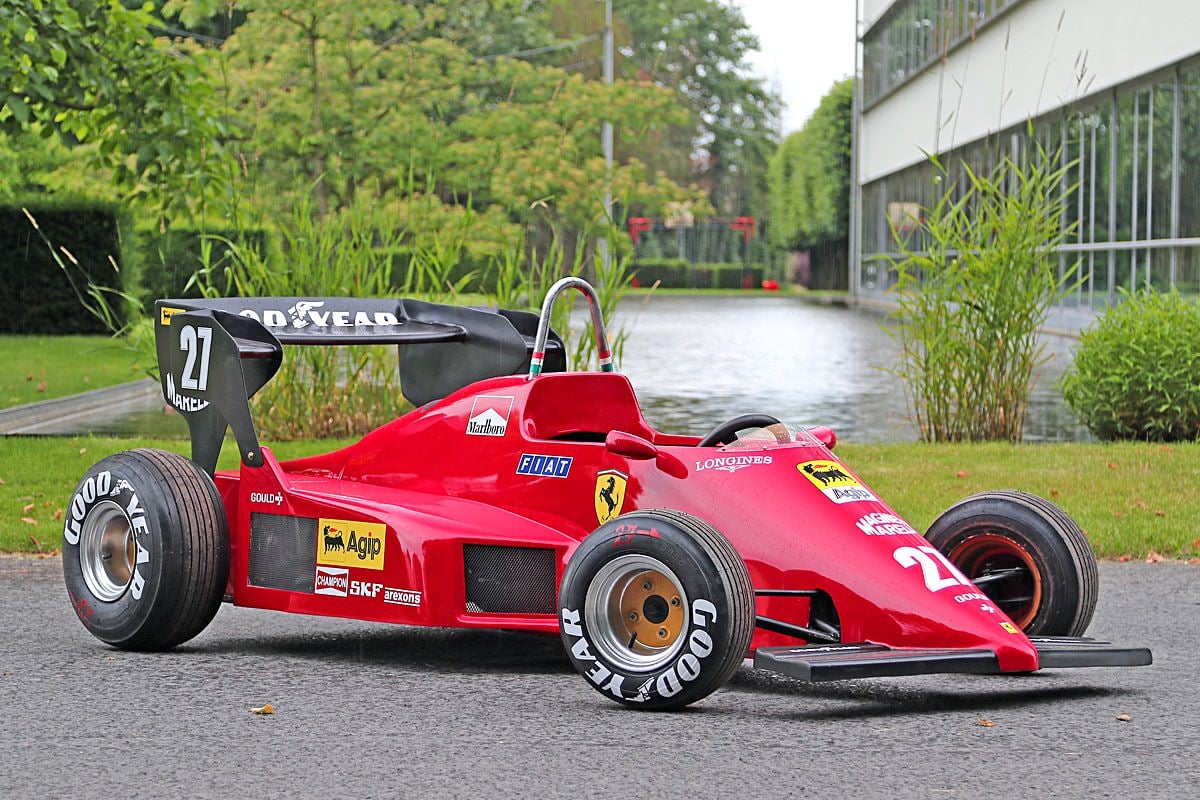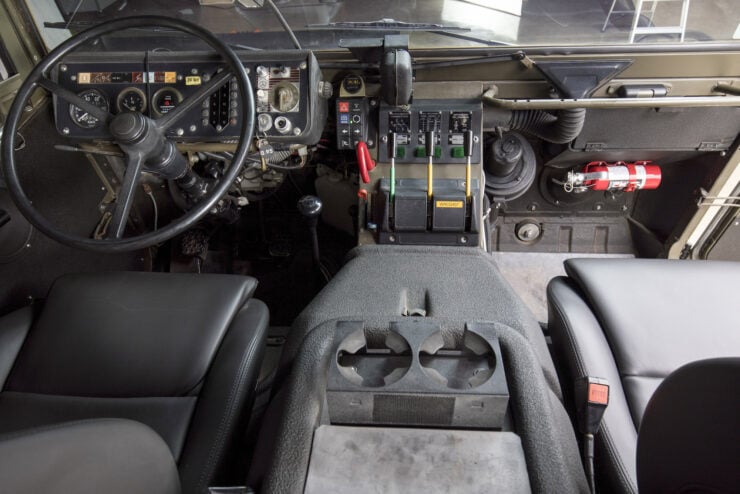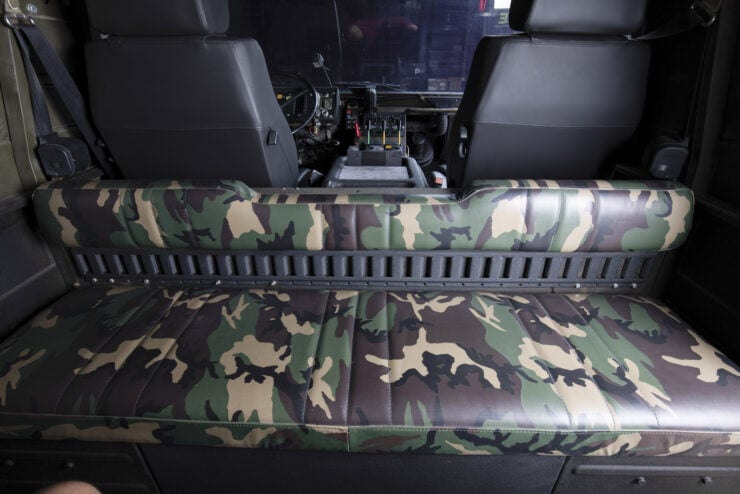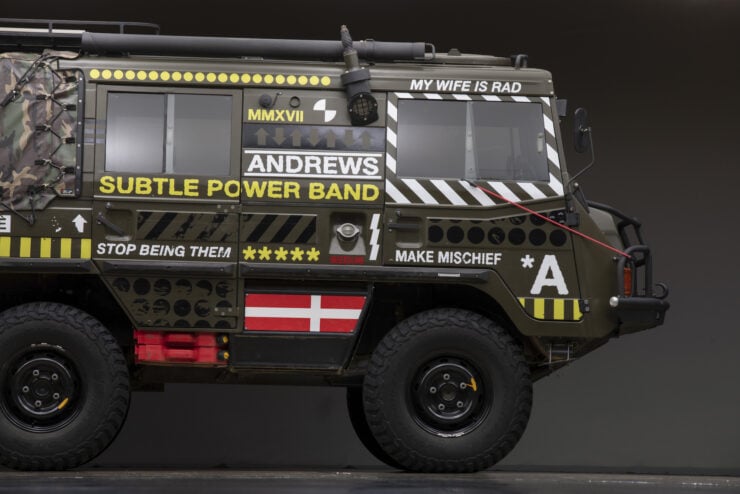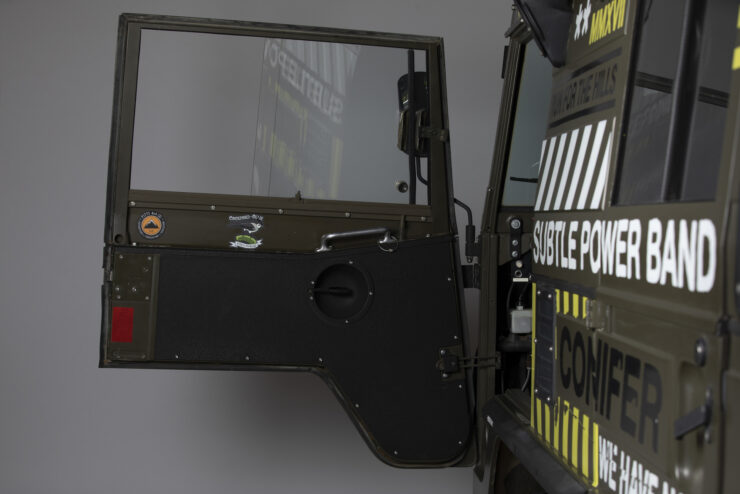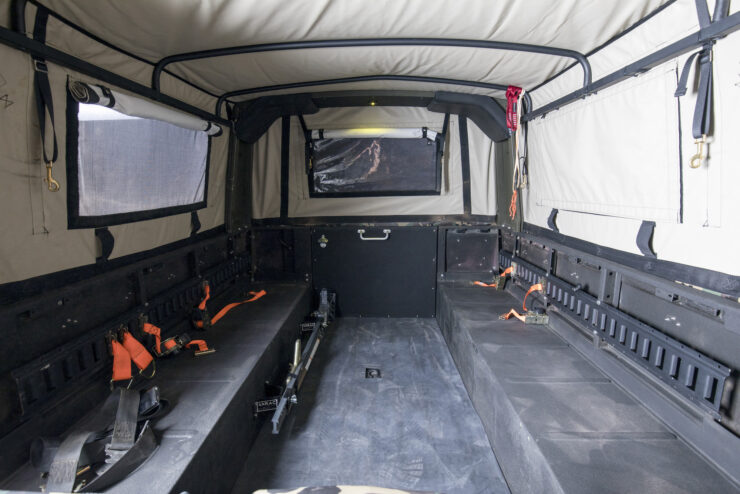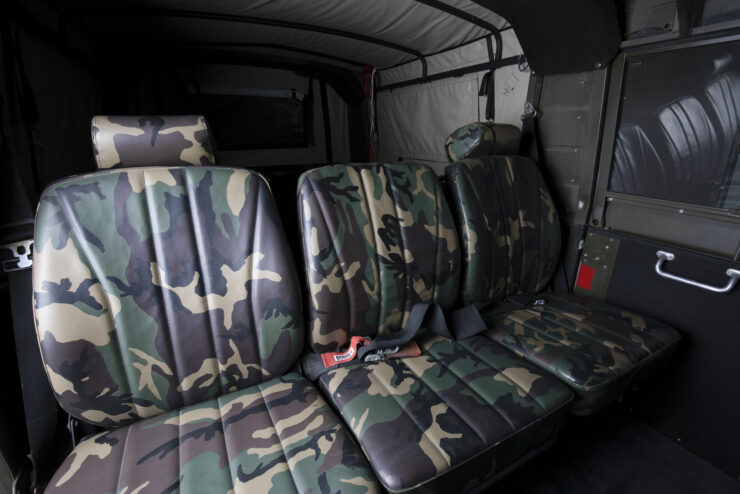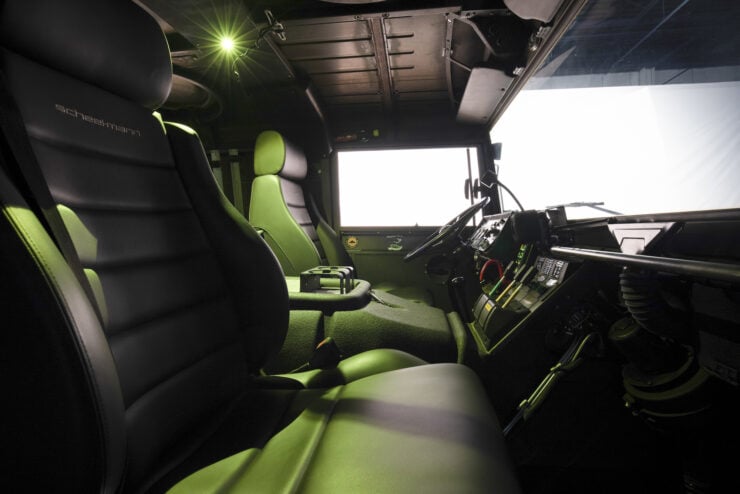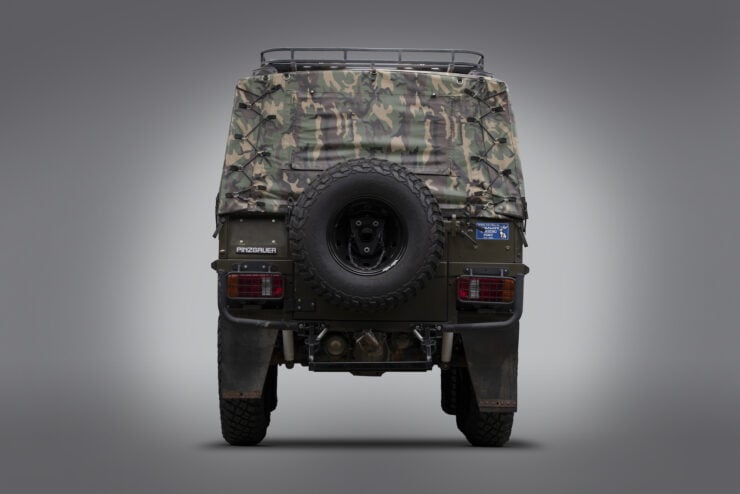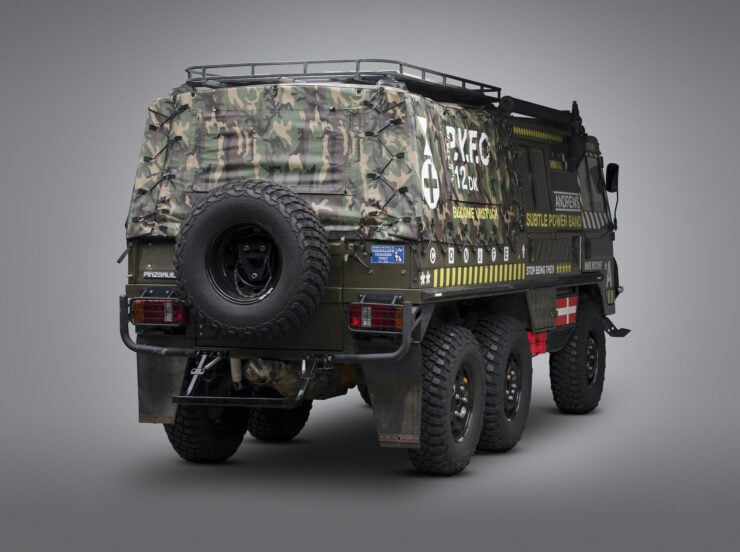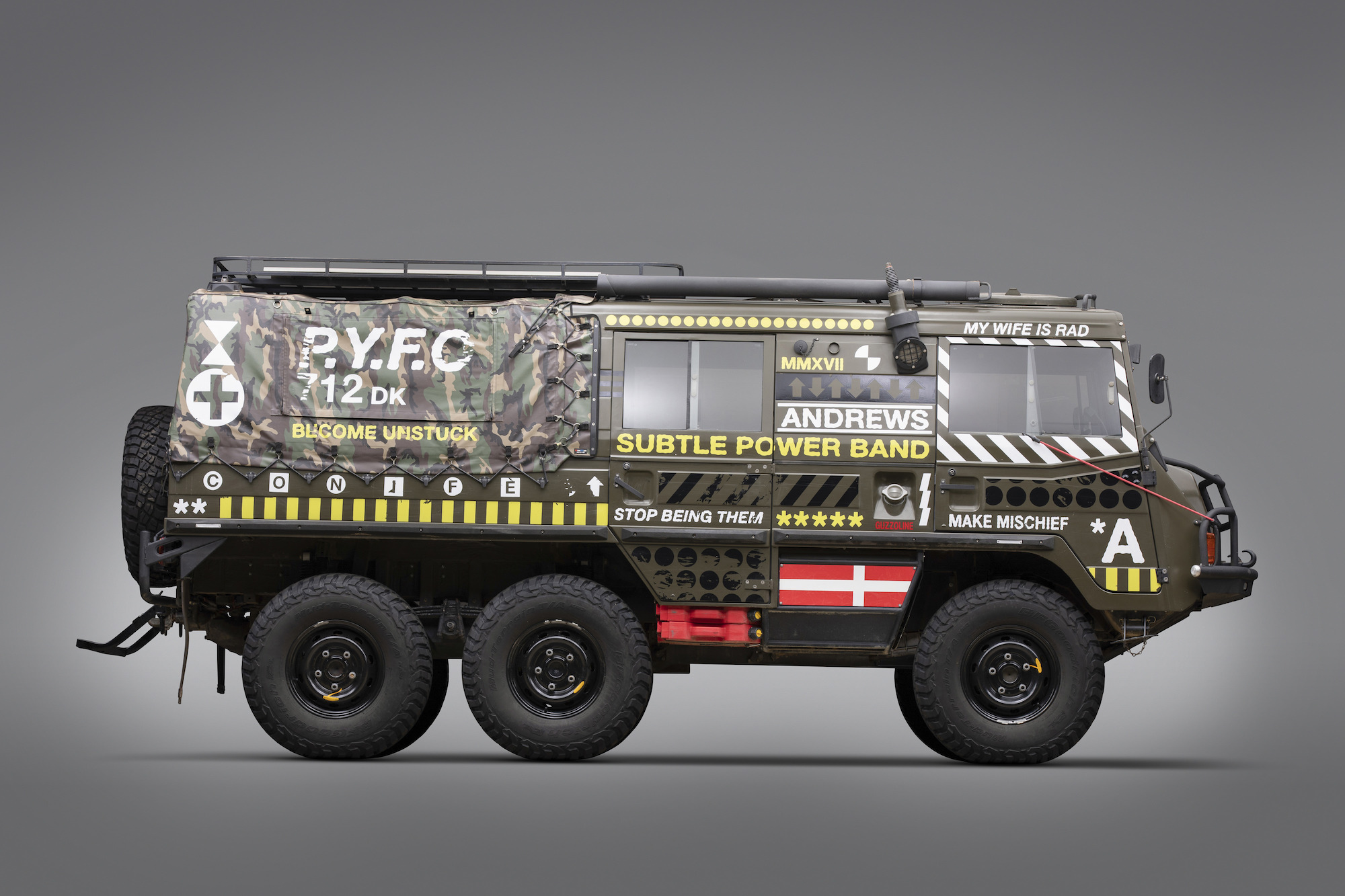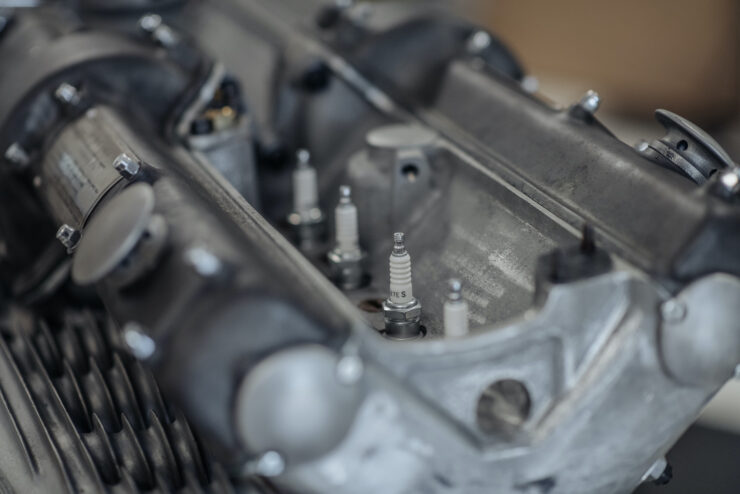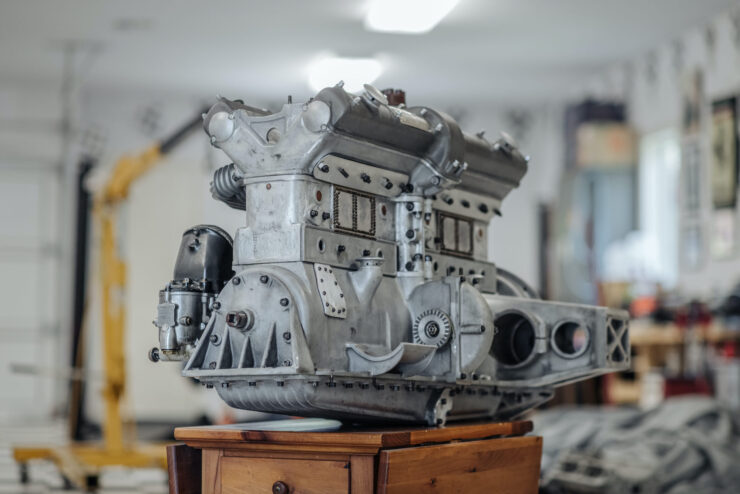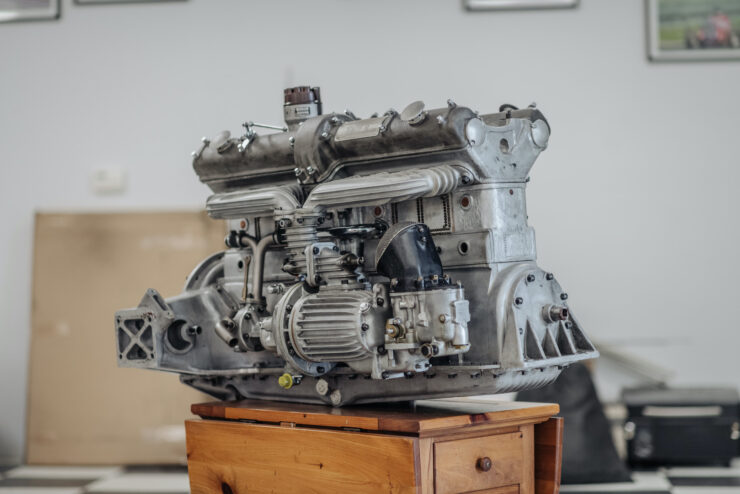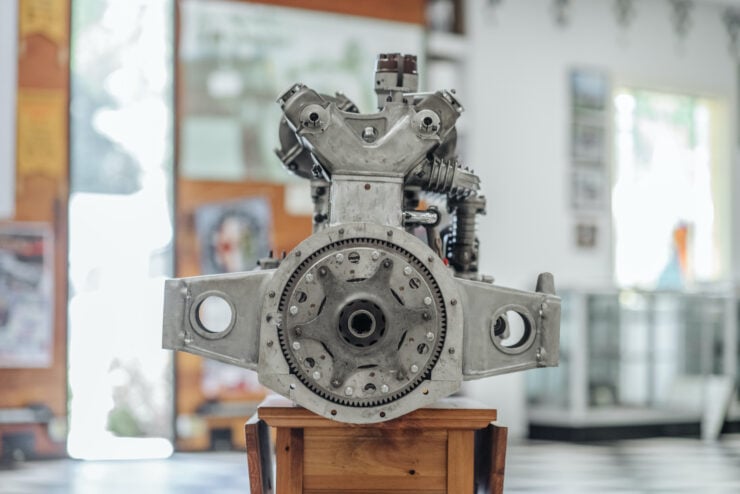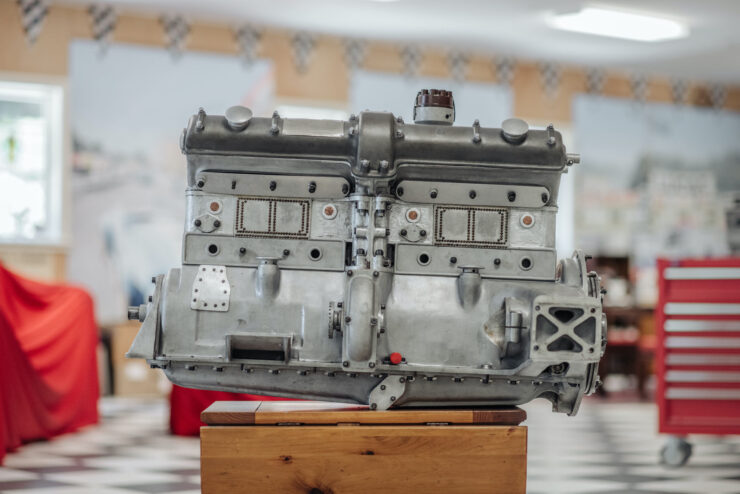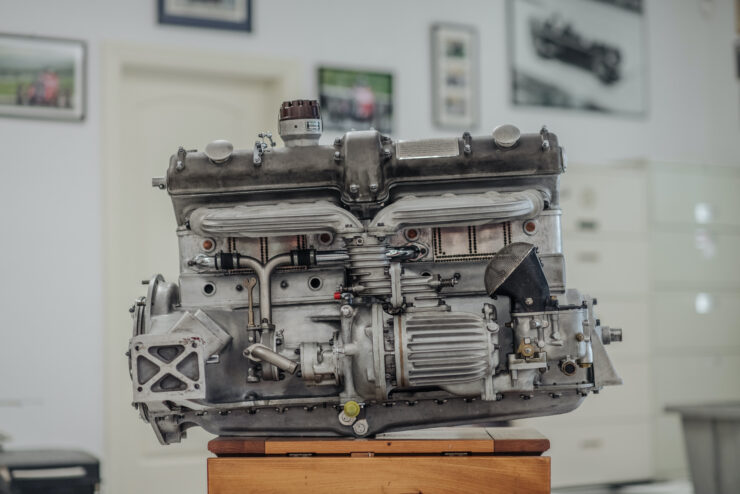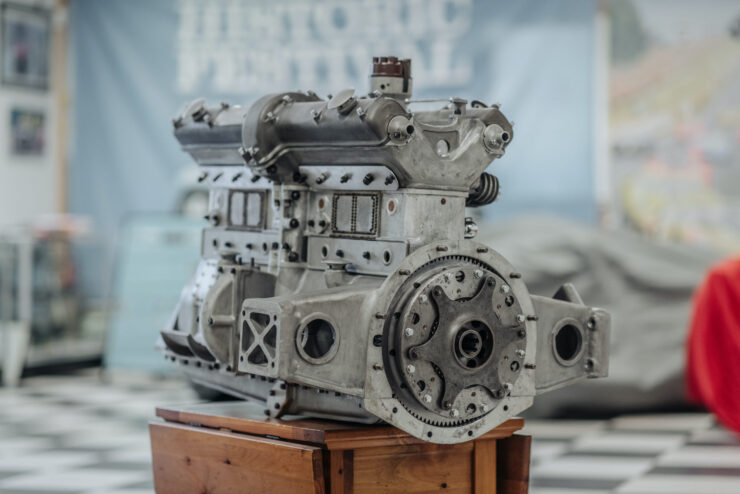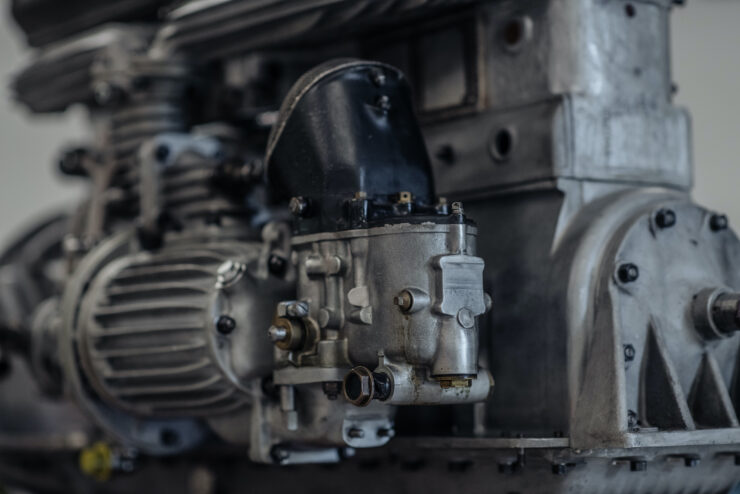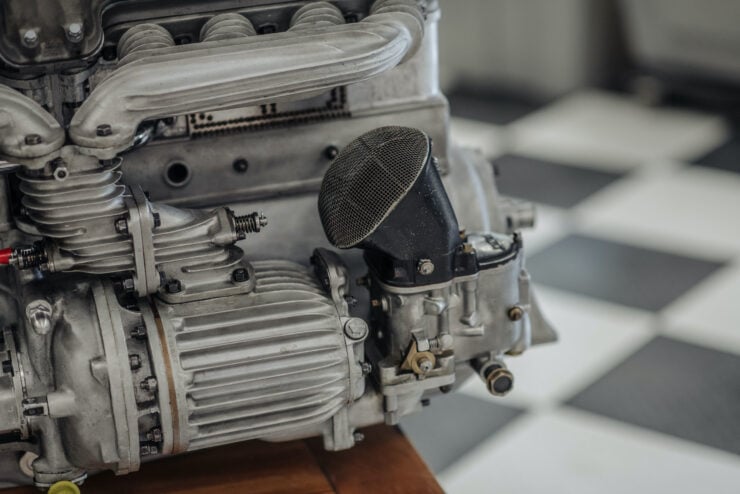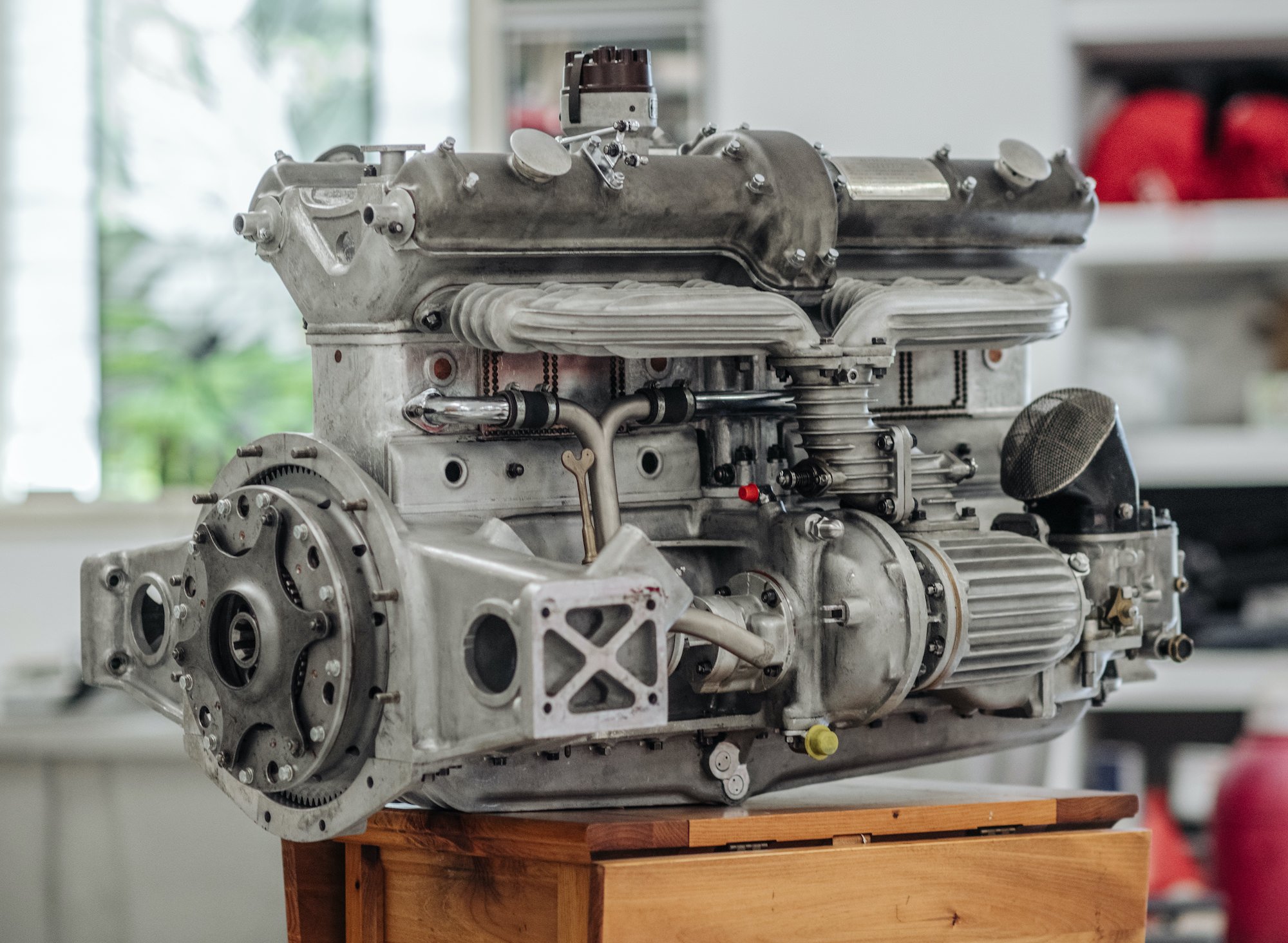This beautifully presented 1969 Porsche 911T is currently owned by Richard Hammond, who has decided to part with and some other cars to fund a new TV series he’s working on about classic car restoration – the working title is The Smallest Cog.
There are likely very few people in the automotive world who don’t already know who Hammond is, but for the uninitiated he’s a former presenter from the Top Gear television show, appearing alongside James May and Jeremy Clarkson.
Under their stewardship Top Gear became the single most watched factual TV show in the world, and the three men now present a show together on Amazon Prime called The Grand Tour.
Fast Facts
✱ Richard Hammond bought this 1969 Porsche 911T a number of years ago and it has formed a favorite member of his own personal collection of notable cars and motorcycles.
✱ The car is an American-delivered, left-hand drive model with 56,000 miles, which are believed to be original.
✱ The Porsche 911T was the “Touring” model of the car, and as a 1969 model it benefits from the upgrades applied to the car in the late 1960s including the larger 2.2 liter engine and the slightly longer wheelbase that helped improve handling.
The Porsche 911T – T Is For Touring
When the Porsche 911 was first introduced in 1964 it had large shoes to fill, it was intended to eventually replace the aging but much-loved Porsche 356, a car that had been in production since the late 1940s.
Above Image: Hammond is selling off a few members of his car and motorcycle collection to fund an all-new TV series about classical vehicle restoration.
Porsche was planning to call their new car the “901”, however French automaker Peugeot owned a trademark on three letter model names with an “0” in the middle, so the name was famously changed to “911” at the last minute.
The 911 featured a slew of upgrades over its predecessor, it was built using modern unibody construction and it featured more modern McPherson strut and trailing-arm suspension. The engine used was a new air-cooled flat-six with a capacity of 2.0 liters, and single overhead cams per bank with two valve per cylinder.
Although no one new it back int 1964, the 911 would go on to become one of the most successful sports car models in history, over one million of them have been built over the past 57 years, and 911s have won countless races and championships.
The early 911s from before the “impact bumper” years of 1973 onwards are widely considered the most beautiful thanks to their more aesthetically pleasing styling. Styling that was lost to a degree when the large impact bumpers were fitted to pass increasingly stringent US safety legislation.
Richard Hammond’s Porsche 911 Shown Here
The nicely preserved Porsche 911T you see here benefits from the above mentioned celebrity ownership of Richard Hammond, one of the most enduringly popular automotive media figures of the past 20 years.
Above Image: This Porsche 911T benefits from the slightly larger 2.2 liter engine and the longer wheelbase.
The reason he’s selling, as mentioned above, is that he needs to raise capital to fund an all new Discovery+ TV series about a classic vehicle restoration business. The plan at the moment is to call it “The Smallest Cog,” possibly a reference to the fact that Hammond is a little shorter than his two longtime co-hosts.
“The irony of me supporting my new classic car restoration business by selling some of my own classic car collection is not wasted on me. It is with a very heavy heart that they go, as they have a great deal of personal sentimental value, but they will be funding the future development of the business and giving life back to countless other classic vehicles.” – Richard Hammond
His 911 is the 911T variant, the “T” indicated that it was a “Touring” model as opposed to its siblings in the Porsche model line up, like the 911S, 911L, 911E, and the 911 Targa.
As a 1969 car (1970 model year) this 911 benefits from the upgraded 2.2 liter (up from 2.0 liters) flat-six with 125 bhp, it also has the slightly longer wheelbase (+57mm) that was designed to help improve handling and reduce the tendency of the car’s brake lights to overtake its headlights at inopportune moments.
The 56,000+ miles currently on the odometer are believed to be original, the car was originally delivered to its first owner in California finished in the color scheme it still carries – Silver Metallic, with a black interior, and polished Fuchs 5-blade alloy wheels.
If you’d like to read more about this car or register to bid you can click here. Its due to roll across the auction block with Silverstone Auctions on the 1st of August with no reserve price, and at the time of writing there’s no price estimate.
Images courtesy of Silverstone Auctions
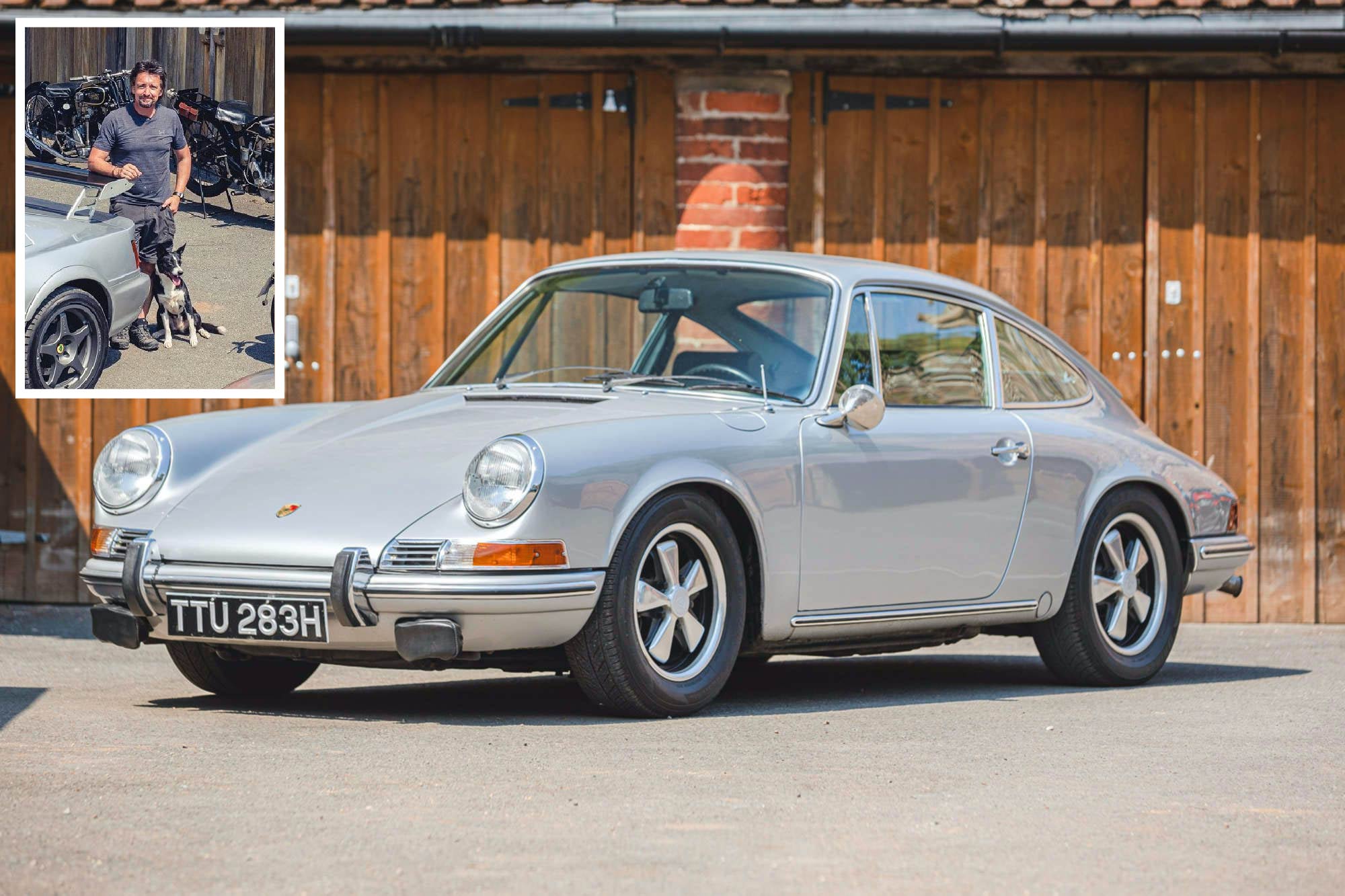
The post Richard Hammond Is Selling His 1969 Porsche 911T appeared first on Silodrome.
from Silodrome https://silodrome.com/richard-hammond-porsche-911t/
via gqrds
